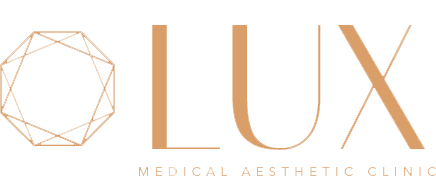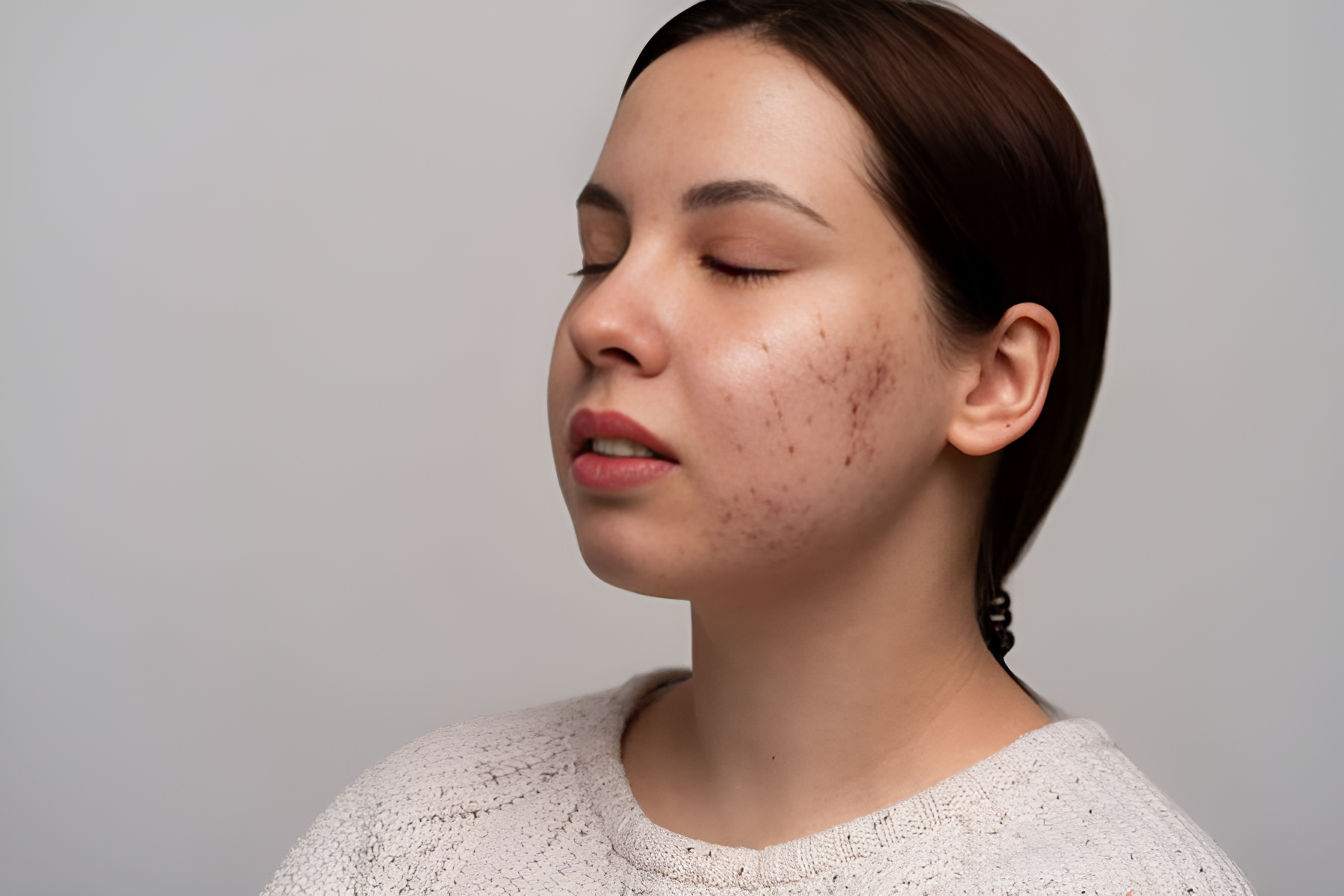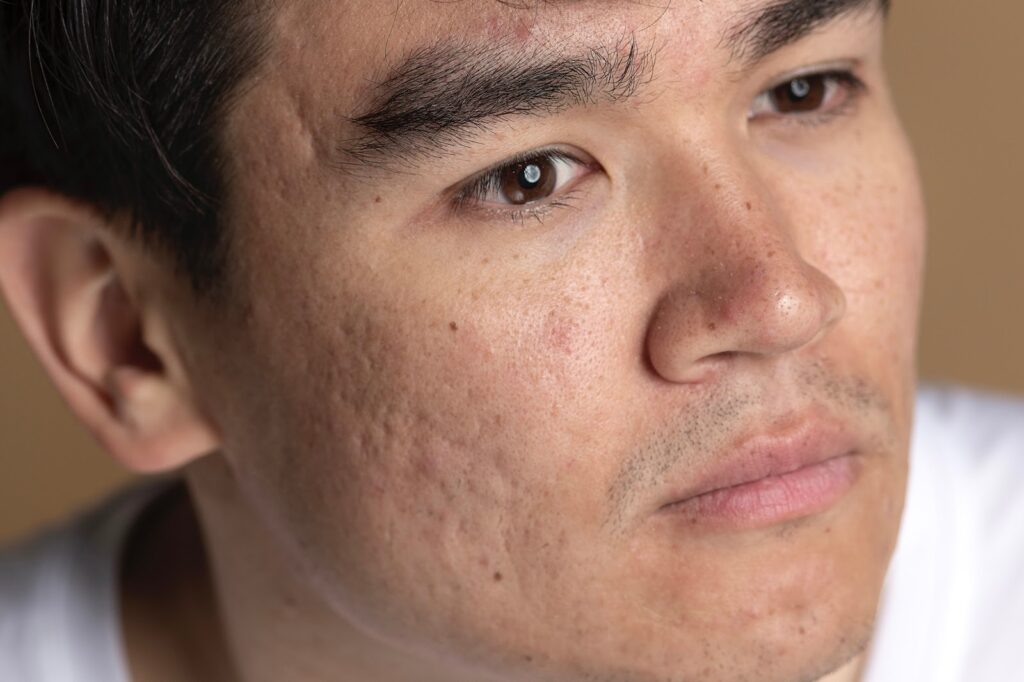
Pitted acne scars are atrophic scars that develop due to the loss of collagen during the healing of inflamed acne lesions. This results in a sunken or pitted appearance on the skin surface. Understanding the types of pitted scars you’re dealing with, their causes, and the various treatment options available to you is essential in managing them effectively.
What are Pitted Acne Scars?
Pitted acne scars are depressions or skin indentations that form due to the body’s response to acne lesions. Severe acne can cause significant damage to the skin and underlying tissues. During the healing process, the body produces collagen to fill the wound. Sometimes, the body may not produce enough collagen to repair the areas of tissue loss, resulting in a sunken appearance.
Types of Pitted Acne Scars

Understanding the different types of pitted acne scars is crucial for identifying the best treatment approach. Here are the main types of acne scars:
Ice Pick Scars
Ice pick scars are deep, narrow indentations in the skin. These scars are typically less than 2mm wide and extend into the dermis, giving the appearance of the skin being punctured by a sharp object.
Boxcar Scars
These scars are wider and have defined edges, giving them a box-like appearance. They can vary in depth but generally are less deep than ice pick scars.
Rolling scars
These are characterised by shallow depressions with soft, rounded edges, creating a wave-like indentation on the skin.
Causes of Pitted Acne Scars
Pitted acne scars form when the skin tissue is destroyed during an acne breakout and cannot regenerate properly. Several factors contribute to the formation of pitted acne scars:
- Severe inflammatory acne. When acne becomes inflamed and forms cysts or nodules, it penetrates deeper into the skin, leading to significant damage in the dermis.
- Picking or squeezing pimples. Picking, popping or squeezing acne can worsen inflammation and increase the likelihood of scarring. This action further disrupts the healing process and damages the skin, leading to more pronounced scars.
- Genetic predisposition. Some people may inherit skin characteristics that make them more susceptible to scarring, regardless of the severity of their acne.
- Delayed treatment. Failing to treat acne promptly can lead to more severe lesions and an increased risk of scarring. Early intervention can reduce the chances of developing pitted scars.
Treatment Options for Pitted Acne Scars
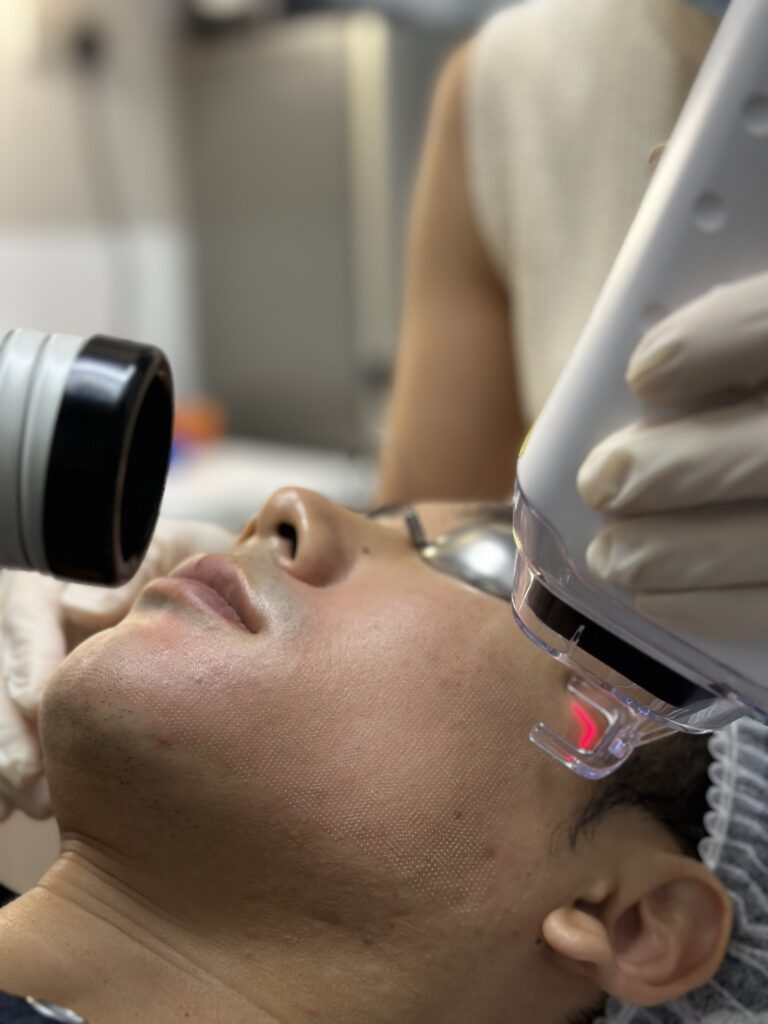
Various treatments are available that may help reduce the visibility of pitted acne scars, each working differently to address various scar types and skin conditions. Here are some of the treatment options you can explore:
Laser Treatments
Laser treatment for acne scars aims to break up scar tissue and stimulate collagen production. Different techniques are applied depending on the type of laser used:
- Ablative lasers. These lasers remove the outer layers of the skin and promote collagen growth, which can improve the skin’s texture. Examples include CO2 and erbium lasers.
- Non-ablative lasers. Non-ablative lasers stimulate collagen production without removing the upper skin layer, which can enhance skin texture with minimal downtime. They are generally used for milder scarring.
- Fractional laser. This laser targets multiple columns of the skin to create microscopic wounds. The procedure involves controlled heat application to stimulate collagen production, which can result in skin renewal and reduced scar visibility.
Microneedling
This technique involves creating micro-injuries in the skin using fine needles. When the microneedles penetrate the epidermis and reach the dermis, they trigger the body’s wound-healing response, increasing collagen and elastin production. This process helps improve the appearance of indented areas caused by acne scars.
Dermal Fillers
Dermal fillers are injectable substances used to elevate depressed areas and may help reduce the visibility of scars. They come in various types, each suitable for different needs and applications.
- Hyaluronic acid fillers bind water molecules, which helps fill out the scars and reduce their visibility.
- Poly-L-lactic Acid (PLLA) stimulates collagen production over time. Achieving desired results may involve multiple sessions. This filler is commonly used to address facial volume loss.
Chemical Peels
Chemical peels use acids to exfoliate the top layers of the skin, removing damaged tissue. The procedure can promote the growth of new, healthy skin cells, improving the appearance of pitted acne scars and enhancing overall skin texture. Chemical peels have different strengths based on how deeply they penetrate the skin.
- Glycolic acid peels at 20-50% concentration are commonly used for superficial peels to treat acne scars. Higher concentrations, particularly 70%, are often used for deep, pitted acne scars. Alpha-hydroxy acids like glycolic acid exfoliate the skin’s surface, removing dead cells and unclogging pores to help prevent future acne breakouts. Regular treatments with such concentrations can help improve the appearance of scars.
- Lower concentrations of trichloroacetic acid, typically between 20% and 35%, are used for broader facial treatment. Higher concentrations are applied for deep, pitted scars using the TCA CROSS technique. This method involves directly applying TCA to the scar area, leading to a localised inflammatory response that stimulates collagen production and reduces scar visibility.
Over-the-Counter Products
Over-the-counter products containing ingredients like retinoids, alpha hydroxy acids (AHAs) and beta hydroxy acids (BHAs) may help improve skin texture and reduce acne scar visibility over time.
Retinoids, for example, accelerate cell turnover and promote collagen production. Glycolic acid, an alpha-hydroxy acid, can reduce acne scarring due to its exfoliating properties.
Preventing Pitted Acne Scars
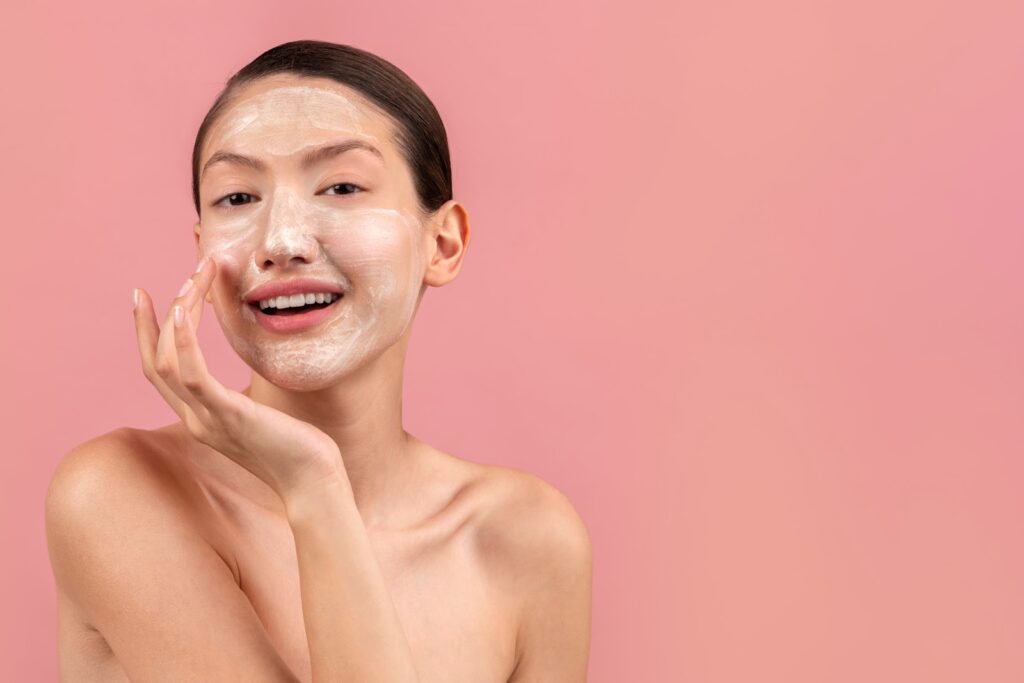
Prevention is crucial in managing acne and avoiding the formation of pitted scars. Here are some strategies to prevent pitted acne scars:
1. Treat acne promptly
Treating acne immediately reduces the risk of developing pitted scars. Early intervention helps prevent inflammation from worsening and damaging deeper skin layers. Over-the-counter acne treatments like salicylic acid can help manage mild to moderate acne by killing bacteria, reducing oil and unclogging pores.
If OTC treatments fail to improve your skin after consistent use, consulting a dermatologist or aesthetic practitioner is crucial for proper diagnosis and prescription tailored to your skin type and condition.
2. Don’t pick, pop, or squeeze pimples
Picking, popping, or squeezing pimples can spread bacteria, increase inflammation and raise the risk of permanent scarring. Apply acne medication to breakouts instead of picking at them to prevent further skin damage and scarring. Seek professional treatment for persistent breakouts.
3. Develop a consistent skincare routine
A consistent skincare regimen can help maintain skin health and minimise the occurrence of acne flare-ups.
- Incorporate non-comedogenic products to prevent clogged pores.
- Opt for gentle cleansers to avoid stripping your skin’s natural moisture barrier, which can irritate and potentially worsen acne.
- Avoid harsh scrubbing of the skin, as it can irritate and worsen existing blemishes.
- Exfoliate regularly to help prevent clogged pores and breakouts by removing dead skin cells.
- Wear broad-spectrum sunscreen daily to prevent the darkening of acne marks and protect your skin from the damaging effects of UV rays.
4. Consider oral medications
Oral medications for acne may be prescribed when topical treatments are not effective. These medications can target various factors contributing to acne, such as bacteria, inflammation and hormonal imbalances. Results may vary based on individual conditions. Here are the main types of oral medications that may be used to treat acne:
- Antibiotics. Oral antibiotics can help fight acne-causing bacteria and reduce skin inflammation. Controlling acne outbreaks may indirectly help prevent new scars from forming. However, overusing or misusing oral antibiotics for acne can lead to antibiotic resistance, making it harder to treat bacterial infections in the future. It’s crucial to use these medications as prescribed and in combination with other treatments, such as benzoyl peroxide, to minimise this risk and ensure effective acne management.
- Isotretinoin. A powerful medication that is often prescribed for severe cases of acne. It reduces oil production, prevents clogged pores and promotes skin cell turnover, which can help minimise the appearance of acne scars over time.
- Hormonal treatment. For women, hormonal therapies may be effective, especially if acne is linked to menstrual cycles or hormonal fluctuations. Options include combined oral contraceptives to help regulate hormones that trigger acne and spironolactone to reduce sebum production.
Conclusion
Pitted acne scars can be challenging to manage, but various treatments and preventative measures may help reduce their visibility. At Lux Medical Aesthetic Clinic, we offer personalised treatment plans tailored to your skin’s unique needs, aiming to improve skin texture and health. Schedule a consultation today!
